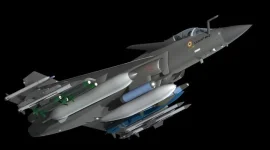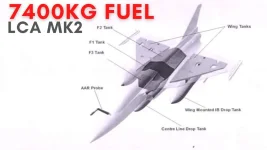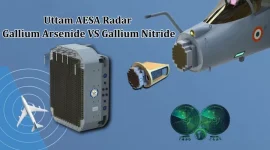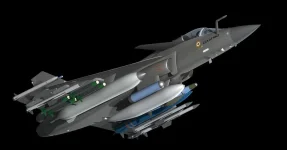- Views: 2K
- Replies: 20
India recently showcased its domestically developed Tejas Mk1A and Tejas Mk2 fighter jets to officials from the Armenian Air Force, signalling potential deepening of defence cooperation between the two nations.
Representatives from Hindustan Aeronautics Limited (HAL) and the Aeronautical Development Agency (ADA) provided a detailed presentation in India, highlighting the capabilities of the aircraft.
This engagement occurs as Armenia seeks to upgrade its air force capabilities. The move is seen partly as a response to neighbouring Azerbaijan's recent steps to strengthen its own air power, including the acquisition of JF-17 fighter jets, which are jointly produced by China and Pakistan.
The briefing also aligns with India's strategic goal of increasing its defence exports, with Armenia having become a significant customer for Indian military equipment in recent times.
The South Caucasus region, where Armenia and Azerbaijan are located, remains an area of significant tension, primarily due to the long-standing conflict over the Nagorno-Karabakh territory.
While both countries operate relatively modest air forces, Azerbaijan's recent purchase of a reported 16 JF-17 Thunder jets potentially shifts the aerial balance. Azerbaijan already possesses a fleet of around 11 MiG-29 fighters, and the addition of the multi-role JF-17s could provide Baku with a numerical and possibly technological advantage.
Currently, Armenia's combat air power relies on a small fleet of just three advanced Su-30SM multi-role fighters, acquired from Russia, along with a number of Su-25 ground attack aircraft.
While the Su-30SM is a capable 4.5-generation platform, the limited quantity leaves Armenia potentially exposed. The Su-25s, though effective in close air support roles, are not designed for the air-to-air combat missions necessary to counter modern fighters like the MiG-29 or JF-17.
During the presentation in India, the Armenian delegation evaluated both the Tejas Mk1A and the upcoming Mk2 variant. Reports suggest that the Mk1A model, which is still ramping up production, did not fully meet the delegation's expectations, possibly due to the production timeline and specific operational requirements of the Armenian Air Force.
However, the Tejas Mk2 variant reportedly generated considerably more interest. This advanced version is being developed with significant upgrades over the Mk1A, including a more powerful General Electric F414 engine (also used in aircraft like the F/A-18 Super Hornet) and aerodynamic improvements like canards for enhanced agility.
HAL aims to roll out the first Mk2 prototype by the end of October 2025, targeting a first flight by March 2026.
Sources indicate that the Mk2's projected performance specifications, range, and weapon-carrying capacity appeared to align better with Armenia's need for a versatile and modern multi-role fighter aircraft.




